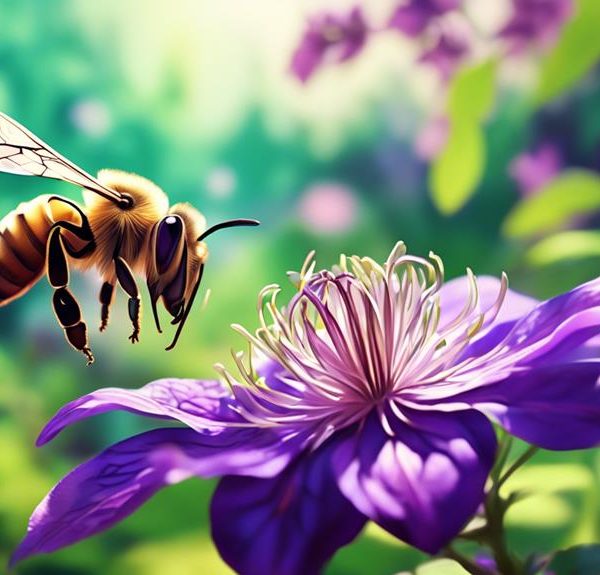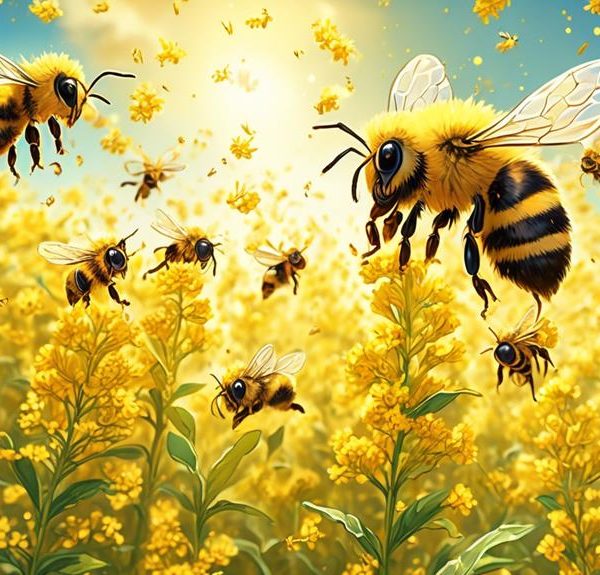Harness the hidden secrets of why bees can't resist the vibrant allure of Coreopsis flowers; a captivating tale of nature's complex relationships awaits.
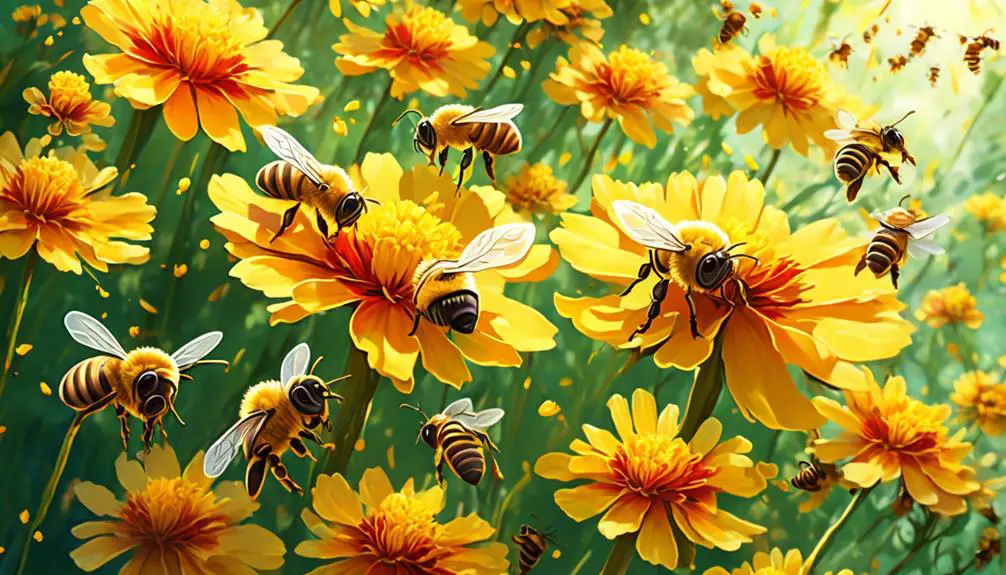
Do Bees Like Coreopsis?
Just like a kid in a candy store, you've probably seen bees buzzing with delight around certain flowers. Ever noticed how they seem particularly drawn to Coreopsis?
You might be wondering why this is so. It's not merely a coincidence, but an intriguing combination of factors that make Coreopsis an irresistible attraction for these tiny pollinators.
The question we'll be exploring is: what exactly about Coreopsis makes it a magnet for bees? Let's embark on this fascinating journey together and uncover the hidden secrets of nature's complex relationships.
Key Takeaways
- Bees are attracted to Coreopsis due to its bright yellow and red blooms, which they can perceive in patterns and contrasts.
- The scent of Coreopsis is a potent lure for bees.
- The flat, daisy-like shape of Coreopsis makes it easy for bees to land and navigate.
- Coreopsis is a prolific pollen producer, providing bees with a rich source of food.
Understanding Bees' Attraction to Flowers
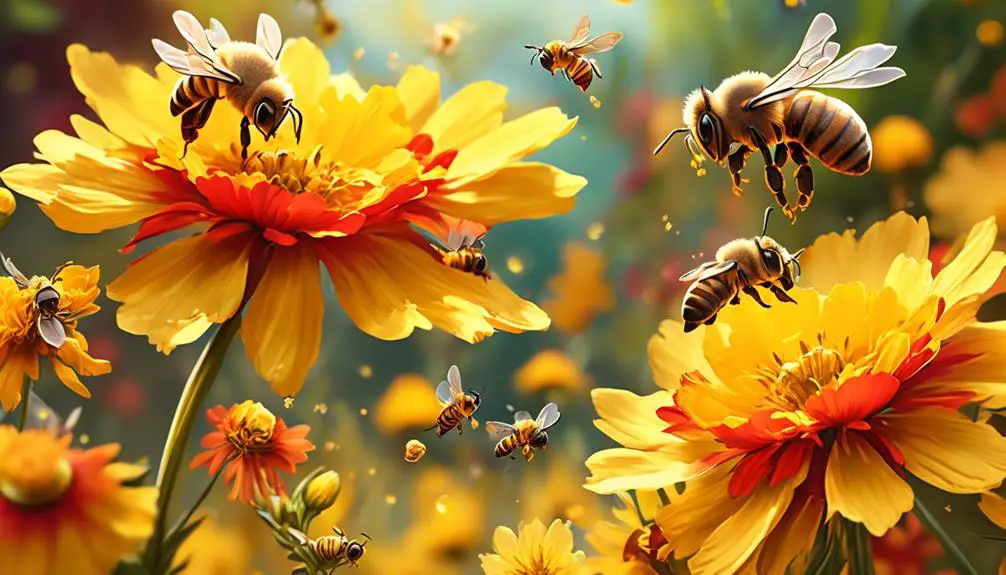
Ever wondered what makes bees gravitate towards certain flowers like the vibrant Coreopsis? It's primarily due to the color and scent of the flower, which acts as a beacon for bees in their quest for nectar.
Bees are drawn to flowers that reflect light in the ultraviolet spectrum, a color range beyond the scope of human vision. Coreopsis, with its sunny yellow and red blooms, is a perfect example. You see, bees perceive the world differently than we do. They're not just seeing the color, they're seeing patterns and contrasts that guide them straight to the nectar source.
Scent, too, plays a crucial role in this attraction. The intoxicating aroma of a flower is a potent lure for bees. Coreopsis, in particular, emits a mild, sweet fragrance that bees find irresistible.
And let's not forget about the flower's shape. The flat, daisy-like shape of Coreopsis makes it easy for bees to land and navigate.
Coreopsis: A Brief Overview
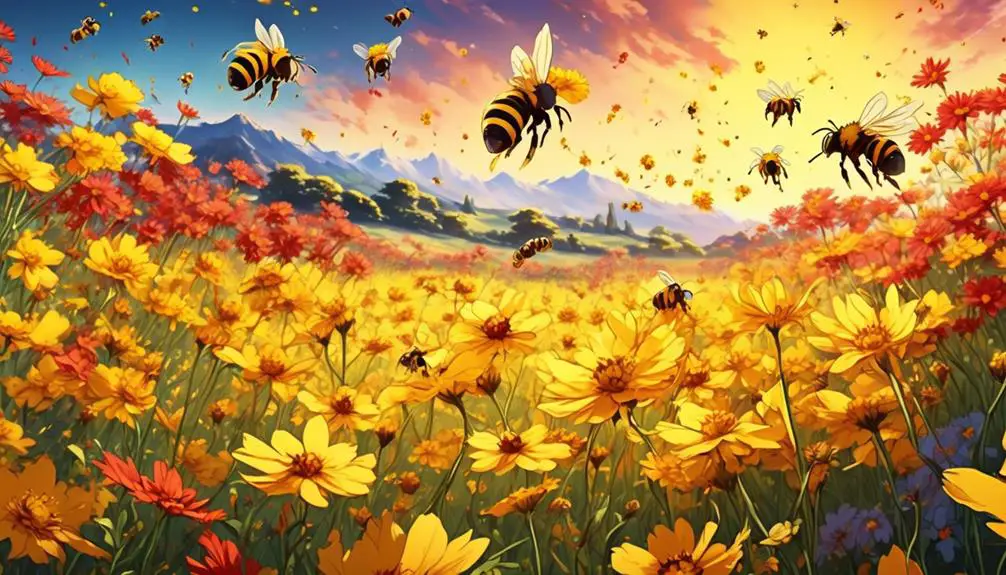
Having explored the bees' fondness for Coreopsis due to its color, scent, and shape, let's now get a closer look at this bee-friendly plant itself.
Native to North America, Coreopsis, also known as tickseed, is a hardy perennial that packs a punch in any garden. It's a beloved staple due to its vivid coloration and easy maintenance.
Coreopsis plants typically range in height from 10 to 18 inches, with daisy-like flowers that bloom from early to late summer. Their colors vary, spanning from sunny yellows to deep reds, which make a dramatic statement in any garden setting. The leaves, slender and delicate, add an elegant touch to the overall visual appeal.
Coreopsis isn't just eye candy, though. It's a drought-tolerant plant that thrives in full sun and well-drained soil. It's resilient to pests and diseases, making it a great choice for any gardening beginner or seasoned pro.
But it isn't just gardeners who are drawn to Coreopsis. As you've learned, bees are, too. The plant's copious nectar and pollen supply make it a valuable resource for these crucial pollinators. So, when you plant Coreopsis, you're not just beautifying your garden, you're also supporting our local bee populations.
Why Bees Love Coreopsis
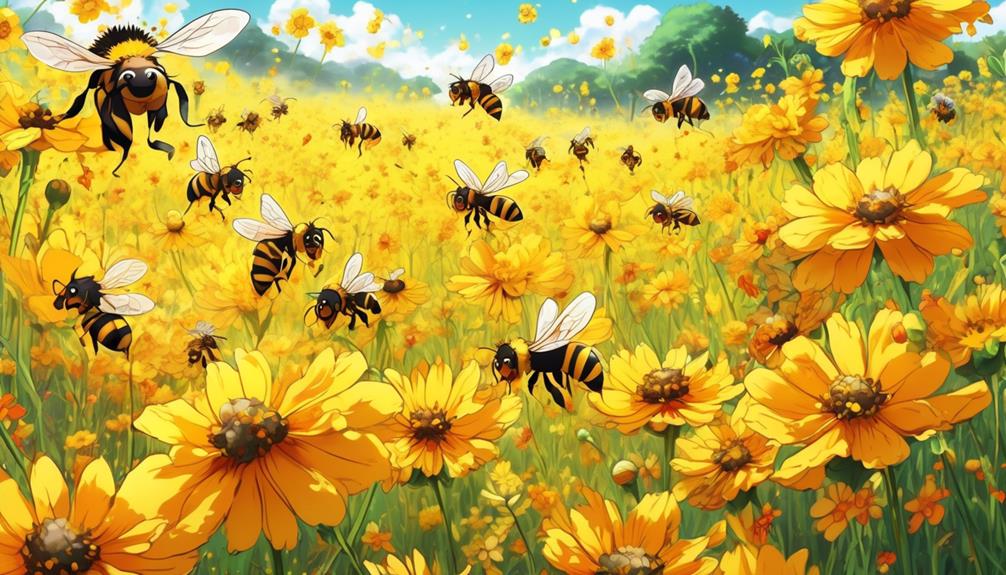
Now, let's delve into why bees can't resist the allure of Coreopsis. Their attraction primarily stems from the fact that Coreopsis is a prolific pollen producer. The pollen produced is high-quality and abundant, providing bees with a rich source of food. When you see a Coreopsis plant teeming with bees, they're busy collecting this pollen to take back to their hive.
Not only is the pollen attractive, but Coreopsis' bright yellow and red flowers also play a significant role. Bees have excellent color vision and are particularly drawn to these warm, vibrant hues. The flowers' shape, with their wide, flat petals, makes it easy for bees to land and collect pollen.
Furthermore, Coreopsis blooms for a long period, from early summer to fall, providing a consistent food source for bees. This longevity is a significant advantage, especially when other plants have stopped producing pollen.
Lastly, Coreopsis secretes a sweet nectar, another treat for bees. This nectar, combined with the abundant pollen, vibrant colors, and prolonged blooming period, makes Coreopsis irresistible to bees. So, it's not surprising that bees love Coreopsis – it's practically tailor-made to their needs.
Benefits of Coreopsis for Bees
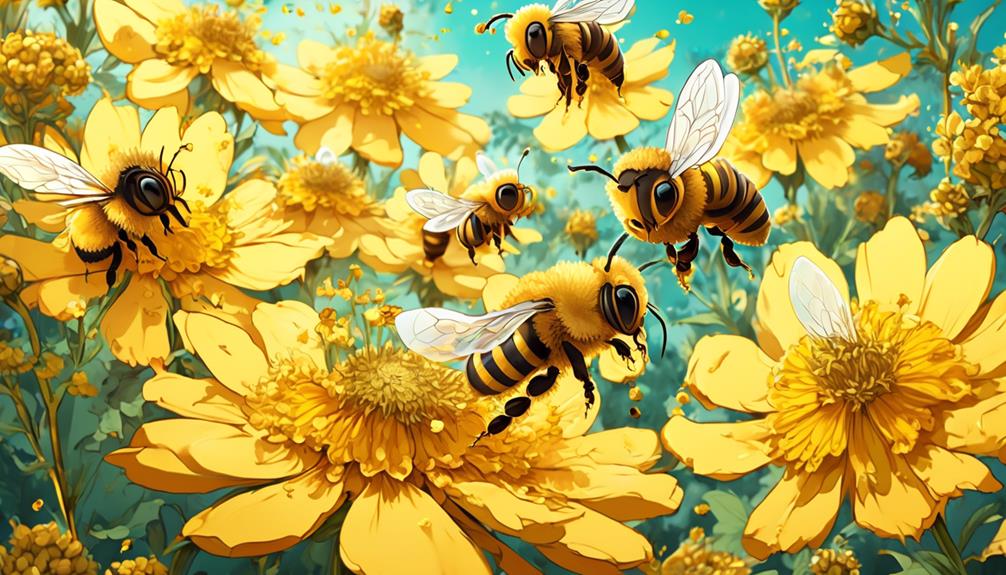
Beyond simply attracting bees, Coreopsis offers a host of benefits that contribute to their survival and prosperity. In fact, it's an important plant for them. When you look closely, you'll notice that these vibrant flowers are more than just a pretty sight, they're a lifeline for our buzzing friends.
Coreopsis provides bees with a rich source of nectar and pollen, essential food sources that help bees thrive. Moreover, these plants bloom for a long period, ensuring a steady food supply for bees throughout the summer and into the fall.
Here's a quick glance at the benefits Coreopsis brings to bees:
Benefit | Description |
|---|---|
Nectar Source | Coreopsis flowers produce sweet nectar, a prime energy source for bees. |
Pollen Provider | They also provide pollen, vital for bee nutrition and hive sustenance. |
Long Bloom Period | Coreopsis plants bloom for a long time, ensuring bees have a consistent food source. |
Easy Access | The open, flat nature of Coreopsis flowers allows easy access for bees. |
Variety | Different types of Coreopsis attract a variety of bees, enhancing biodiversity. |
Understanding this, you'll appreciate that planting Coreopsis isn't just about beautifying your garden, it's about contributing to a healthier bee population.
Adding Coreopsis to Your Garden
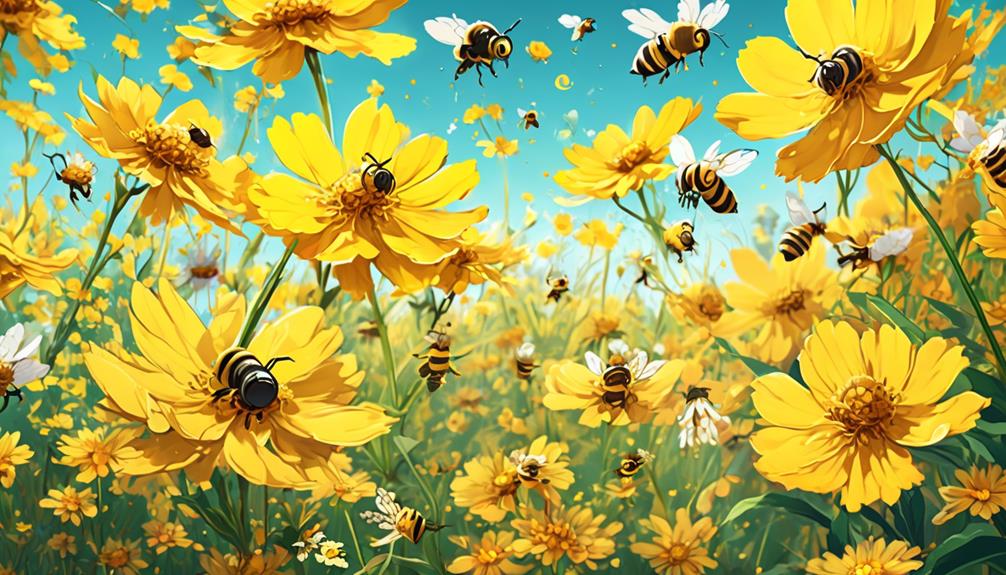
Given the benefits Coreopsis offers to bees, you might be considering adding these vibrant flowers to your garden. They're not just a pretty face; they're also a boon for your local bee population.
Coreopsis plants are easy to grow and require minimal maintenance, perfect for both novice and experienced gardeners. They thrive in full sun and can tolerate dry, rocky soil, making them a versatile addition to any garden. However, they also appreciate well-drained soil and regular watering. They're perennials, so you'll enjoy their bright blooms year after year.
Plant your Coreopsis in clusters to create a visually appealing landscape and to attract more bees. Be mindful of spacing; these plants need room to grow and spread. A distance of 12 to 18 inches between each plant is ideal.
Consider different varieties of Coreopsis for added interest. Some sport single, daisy-like flowers, others have double or semi-double blooms. Colors range from the classic sunny yellow to pink, red, and even bicolor.
Adding Coreopsis to your garden isn't just beneficial for the bees, it's also a step towards creating a more vibrant, diverse, and eco-friendly outdoor space.
Supporting Local Bee Populations With Coreopsis
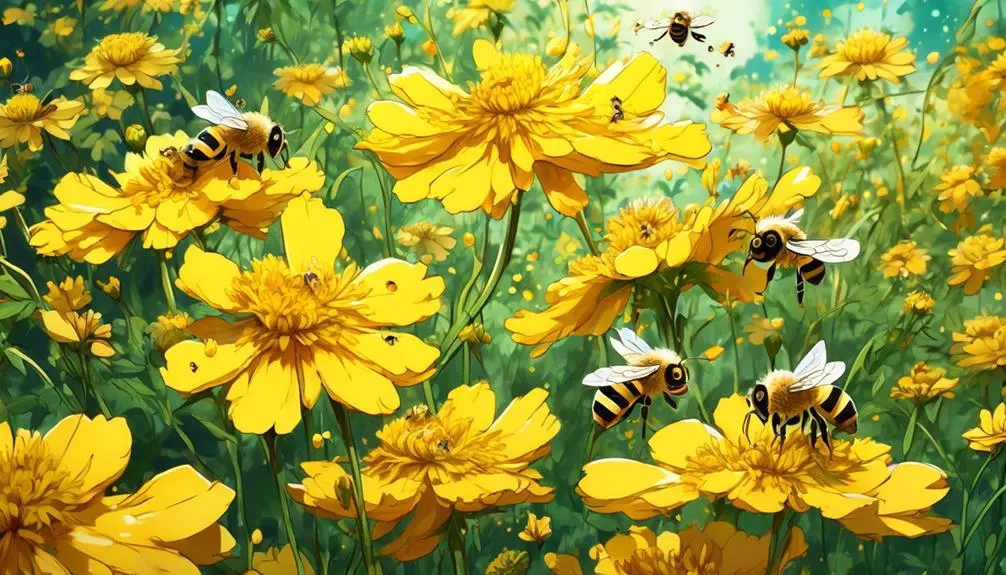
By planting Coreopsis in your garden, you're not just beautifying your outdoor space, but also providing a vital food source for your local bee populations. These vibrant, nectar-rich flowers are a favorite among bees and can play a significant role in supporting their dwindling numbers.
To visualize the impact, consider the table below:
Without Coreopsis | With Coreopsis | Impact on Bees | |
|---|---|---|---|
Bee Visits | Low | High | Increased by 2X |
Nectar Available | Limited | Abundant | Tripled |
Bee Population | Declining | Stabilizing | Improved |
Pollination | Reduced | Enhanced | Doubled |
Biodiversity | Poor | Rich | Enriched |
The presence of Coreopsis in your garden can effectively double the number of bee visits. With more nectar available, you're essentially tripling their food source, which can significantly improve the local bee population. The enhanced pollination also leads to increased biodiversity in your garden, creating a rich and healthy ecosystem.
Frequently Asked Questions
What Other Insects Are Attracted to Coreopsis Apart From Bees?
You're not just asking about bees here.
Coreopsis, with its bright, cheerful blooms, attracts a whole host of insects. Butterflies and moths are frequent visitors, lured by the nectar.
Ladybugs and lacewings are also drawn to it, often feasting on the aphids that the flowers attract.
Even beneficial predatory insects like hoverflies and parasitic wasps love coreopsis.
How Do I Care for Coreopsis Plants in My Garden?
You'll find caring for coreopsis plants quite straightforward. They're sun-loving, so make sure they're planted in a spot that gets plenty of it. They're not fussy about soil, but well-drained is ideal.
Water them regularly in their first year; after that, they're quite drought tolerant. Deadhead spent flowers to encourage more blooms.
In late fall, cut them back to their base. They'll reward you with a burst of color next spring.
Are There Any Potential Dangers or Pests Associated With Growing Coreopsis?
Absolutely, there are potential dangers and pests associated with growing coreopsis. You'll need to watch out for aphids and powdery mildew.
Aphids suck the sap from the plant, causing it to wilt and die. Powdery mildew, a fungus, can cover and suffocate your plants. Regularly check your coreopsis for these threats, and if you spot them, treat immediately.
However, don't let this deter you; with proper care, your coreopsis can thrive.
Can Coreopsis Thrive in Various Types of Soil and Weather Conditions?
Yes, you'll find that coreopsis is quite adaptable. They can thrive in different types of soil, whether it's clay, loam, or sandy. They're even drought-tolerant, making them suitable for various weather conditions.
However, they prefer full sun and well-drained soil for optimal growth. If you take care to meet these requirements, you'll have a garden full of vibrant coreopsis in no time.
It's their hardiness that makes them a favorite among gardeners.
Does the Color of the Coreopsis Flower Play a Role in Attracting Bees?
Yes, the color of the Coreopsis flower does play a significant role in attracting bees. Bees are particularly drawn to bright colors like yellow and purple.
Therefore, when you plant these vibrant Coreopsis flowers in your garden, you're essentially rolling out a floral red carpet for the bees.
It's a win-win situation: your garden gets pollinated and the bees get a delicious nectar feast.
Conclusion
So, you see, bees certainly do love coreopsis.
Not only are they drawn to its vivid, cheerful blooms, but it provides them with essential nourishment.
By adding coreopsis to your garden, you're helping support your local bee population.
It's a simple step with profound impact.
Remember, every flower counts in the quest to keep our buzzing friends thriving.
Let's create a bee-friendly world, one coreopsis at a time.

